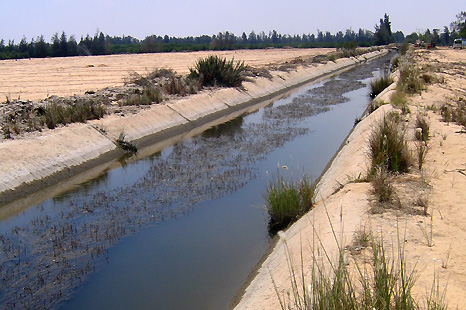irrigation

An irrigation canal in Egypt.
Irrigation is the artificial application of water to soil to promote plant growth. Irrigation is vital for agricultural land with inadequate rainfall. The practice dates back at least to the canals and reservoirs of ancient Egypt, before 3000 BC. Later, simple mechanical devices, including the Archimedean screw, were used to transfer water from rivers and streams into irrigation channels. Today, most water for irrigation is surface water or groundwater; more than 320 million acres of farmland throughout the world are irrigated, notably in the United States, India, Pakistan, China, Australia, Egypt, and Russia.
There are three main irrigation techniques: surface irrigation, in which the soil surface is moistened or flooded by water flowing through furrows or tubes; sprinkler irrigation, in which water is sprayed on the land from above; and subirrigation in which underground pipes supply water to roots. The amount of water needed for a particular project is called the duty of water, expressed as the number of hectares irrigated by water supplied at a rate of 1 square meters per second.
